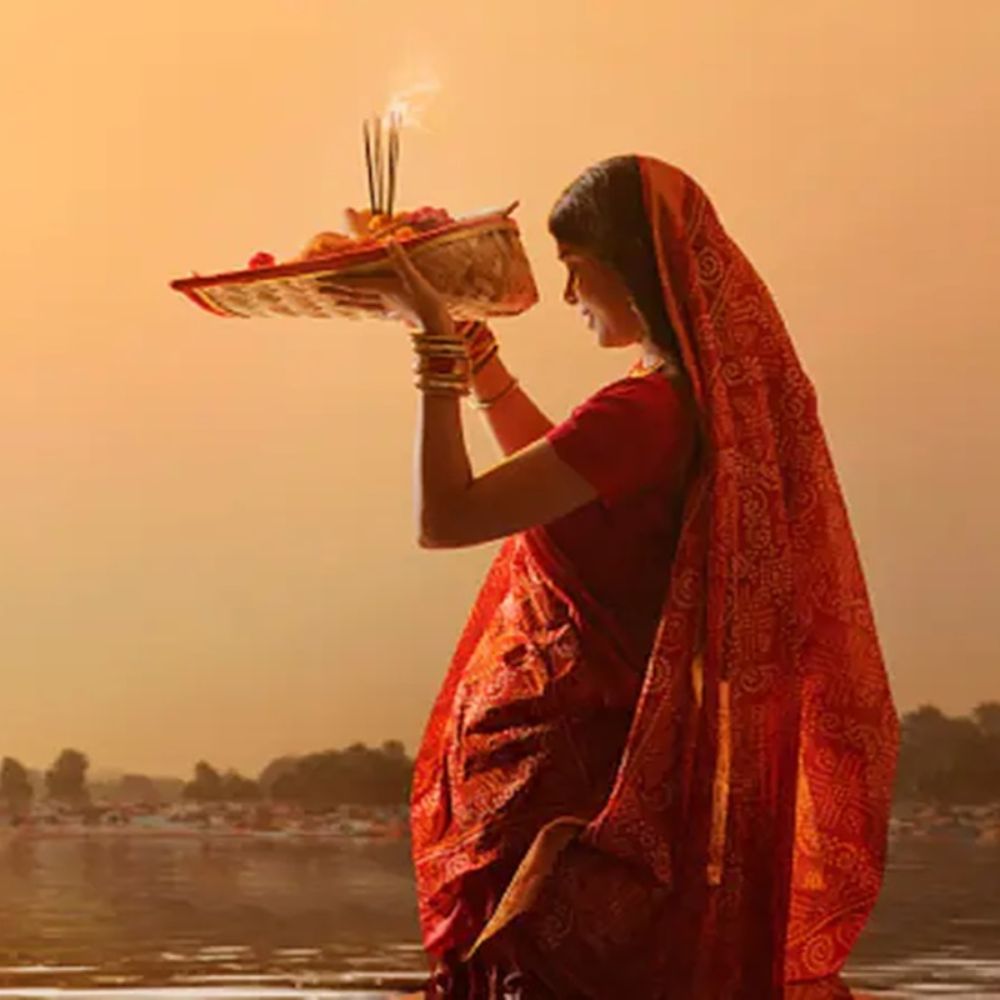Chhat puja is one of the popular festivals of Bihar and Jharkhand. It is also celebrated in states like West Bengal, Assam, Orissa, Uttar Pradesh and even in other countries like Nepal and Mauritius. Chhat puja is also known as ‘Suryashashthi.’
The festival of Chhat is celebrated on the sixth day of the month of Kartik (October – November). It is 4-day long festival. The main festival of Chhat in 2013 is on 12th November and 13th November. The first day of Chhat festival, called Nahai Khai, is on 10th November and Kharna is on 11th November. The full dates are:
Four days Of Chhath Puja 2013
Chhath Puja 2013- Day 1
Nahakha (literally, bathe and eat): On the first day of Chhath Puja, the devotees take a dip, preferably in the holy river Ganga, and carry home the holy water of the river Ganga to prepare the offerings. The house and surroundings are scrupulously cleaned. The parvaitin allows themselves only one meal on this day.
Chhath Puja 2013 – Day 2
Kharna (the day before Chhath): On Panchami, the day before Chhath, the parvaitins observe a fast for the whole day, which ends in the evening a little after sunset. Just after the worship of earth, the offerings of Rasiao-kheer (rice delicacy), puris (deep-fried puffs of wheat flour) and bananas, are distributed among family and friends. From this day onwards, for the next 36 hours, the parvaitin goes on a fast without water.
Chhath Puja 2013 – Day 3
Sandhya Arghya(evening offerings): The day is spent preparing the prasad (offerings) at home. On the eve of this day, the entire household accompanies the parvaitins to a riverbank, pond or a common large water body to make the offerings (Arghya) to the setting sun. It is during this phase of Chhath Puja that the devotees offer prayers to the setting sun.
The occasion is almost a carnival. Besides the parvaitin, there are friends and family, and numerous participants and onlookers, all willing to help and receive the blessings of the worshipper. Ritual rendition of regional folk songs, carried on through oral transmission from mothers and mothers-in-law to daughters and daughters-in-law, are sung on this occasion. The folk songs sung on the evening of Chhath reflect the culture, social structure, mythology and history of Bihar and Uttar Pradesh.
Chhath Puja 2013 – Day 4
Parna(the day after Chhath) Bihaniya Arghya (next morning offerings): On the final day of Chhath Puja, the devotees, along with family and friends, go to the riverbank before sunrise, in order to make the offerings (Arghya) to the rising sun. The festival ends with the breaking of the fast by the parvaitin and friends visiting the houses of the devotees to receive the prashad. Witnessing Chhath being celebrated at the crack of the dawn on a river bank is a beautiful, elating spiritual experience connecting the modern Indian to his ancient cultural roots.
Rituals about Chhath Puja
It is believed that ritual of Chhath puja may even predate the ancient Vedas texts, as the Rigveda contains hymns worshiping the Sun god and describes similar rituals. The rituals also find reference in the Sanskrit epic poem Mahabharata in which Draupadi is depicted as observing similar rites.
In the poem, Draupadi and the Pandavas, rulers of Hastinapur (modern Delhi), performed the Chhath ritual on advice of noble sage Dhaumya. Through her worship of the Sun God, Draupadi was not only able to solve her immediate problems, but also helped the Pandavas later regain their lost kingdom.
It is also believed that Chhath was started by Karna, the son of Surya Putra Karna who ruled over the Anga Desh (present day Bhagalpur district of Bihar) during the Mahabharat Age. He was a great warrior and fought against the Pandavas in the Kurukshetra War.
Its yogic/scientific history dates back to the Vedic times. The rishis of yore used this method to remain without any external intake of food as they were able to obtain energy directly from the sun’s rays. This was done through the Chhath method. This has been stated in the book Sri Chhath Mahaviggyaan (The Science of Chhath) by Yogishri Oumkaar.
Chhat Celebrations
Folklores and hymns are sung with somber hues on the banks of the Holy Ganges or any fresh watery body. Lamps are offered to the Ganges upon which millions of lamps are seen lit and thousands of hands are seen with offering of ‘Arghya’ till the late night.
Following this the devotees return home and have grand celebrations with singing and feasting. Special pujas with sugarcanes are conducted in home for Agni deva (god of fire). Then fast is broken by eating ‘Prasadam’ or sanctified food.
People pray to the Sun god for their well-being. They have ardent faith that by observing Chhat puja one gets his wishes fulfilled. They also believe that this vrat helps in curing leprosy and ensures longevity and prosperity of the family.
Wishing our readers Happy Chhat Puja!




